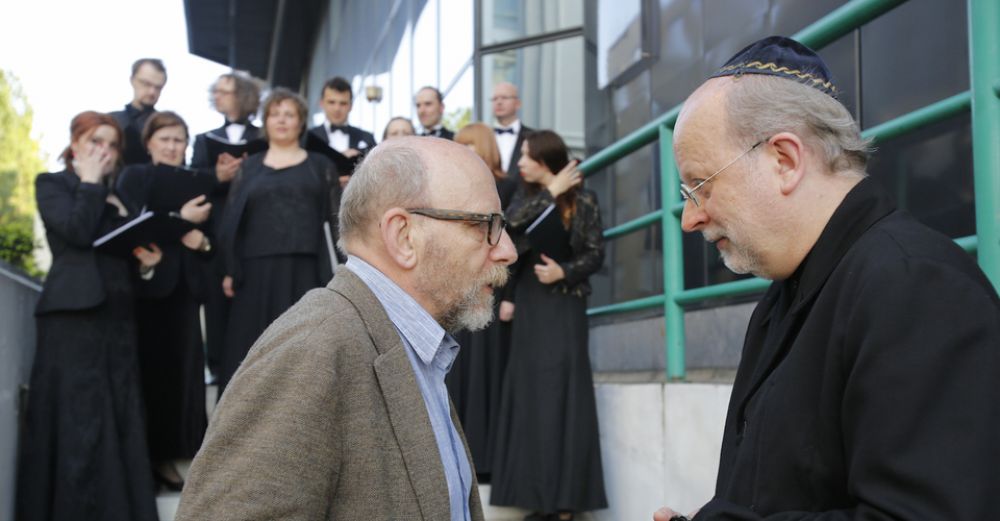- News
- Events
- Oneg Shabbat
- Collections
- Research
- Exhibitions
- Education
- Publishing Department
- Genealogy
- About the Institute
- Bookstore


On 16th May, in the area of Bank Square one could hear old Jewish songs. In this way, the Choir of Wroclaw’s White Stork Synagogue inaugurated the celebrations of the 70th anniversary of the destruction of the most magnificent pre-war Jewish building. Warsaw residents came in crowds in order to listen to the hymns that once would could been heard in the reformed synagogue in Tłomackie. The conductor, Stanisław Rybarczyk, led the singers performing such songs as „Wajhi Binsoa”, „S’u Sh’orim”, „Ma Towu”, „Adonai Adonai” and others
The director of the Institute reminded the audience that they had met there on the important Jewish religious holiday of Shavuot, or Pentecost.
- We meet on the Feast of the Harvest, during which the Book of Ruth is read. Its second element is the feast of the revelation of Torah, the anniversary of the moment when God gave the Torah at Mount Sinai. This was accompanied by thunders, a great clamour. And I associate this sound with the blowing up of the Great Synagogue, which was like a mockery, a ridicule of this act by the Nazis. It was supposed to symbolize the end of the Jews and their presence in Warsaw. And by this little reconstruction we would like to remind what this square looked like till 16th May, 1943, to bring back the memory of this place - said Professor Śpiewak, the director of the Jewish Historical Institute.
However, dr Eleonora Bergman emphasised that the Great Synagogue perfectly formed part of the architecture of former Warsaw.
- Leandro Marconi, the author of the design of the Synagogue, loved using the motif of classical frontage based on the façade of the Place on the Water in Łazienki Park. Our reconstruction shows the building from the outside, as there was no possibility to reconstruct the great interiors made of precious materials. For example, the place where the Torah scrolls were stored had been built from cedar specially imported from Lebanon. It was a really beautiful building — said Eleonora Bergman, architectural historian.
The designer of the model of the synagogue and Tłomackie square, Jan Strumiłło, pointed out the main aim of the installation: the commemoration of the Great, the Absent.
- Obviously it was impossible to reconstruct the Synagogue in its original size and place it in the exact same location. Therefore, it was placed at the square between the Museum of Independence and “Gruba Kaśka” in a scale of 1:10. Such scale allows the visitors to enter the former Tłomackie square and see how it and the synagogue looked like. We managed to gather a few photographs of the square (from JHI’s collection), stretch them, enlarge them and give a non-existent reality of this place — explained Strumiłło.
The announcement of the winners of the open competition for a conceptual design relating to the Great Synagogue closed the celebrations.
- We received 57 works of very diverse character. Among them, there are location-based games, films, lighting installations designs, scripts of sessions or workshops as well as architectural designs: columns, fountains, headstones. The aim of our competition was to raise awareness and remind not only of the magnificent building, but also of the people associated with it – the former Jewish residents of Warsaw — said a member of the jury, Teresa Śmiechowska.
The works submitted for the contest can be seen in the exibition room of JHI in Błękitny Wieżowiec till the end of June. However, the installation itself, under favourable weather conditions, will be available to the public until the end of summer.
More photos of the performance of the choir, the model of the Synagogue and the awarding of the winners in the section “Resistance and the Holocaust”